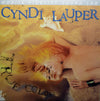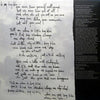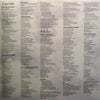







Cyndi Lauper - True Colors (MOFI Silver Label, Ultra Analog, Half-speed Mastering, 140g)
ORDER LIMITED TO ONE ITEM PER CUSTOMER
Cyndi Lauper – lead vocals, arrangements, backing vocals (A4, B1-2, B5), jam box (B2), Emulator voice (B5)
Jeff Bova – keyboards (A1, A3, A5, B3-5), arrangements (A1, A3, A5, B3-5)
Peter Wood – keyboards (A2, A4-5, B1), arrangements (A2, A4, B1, B4), additional keyboards (A3), synthesizer bass (B2)
Jon Goldberger – sound effects (B2)
Nile Rodgers – guitars (A1)
John McCurry – guitars (A2-4, B3-5)
Rick Derringer – guitars (A5, B3)
Adrian Belew – guitars (B1), arrangements (B1)
Robert Holmes – guitars (B1)
Neil Jason – bass guitar (A2, A4, B1, B3)
Jimmy Bralower – LinnDrum programming, arrangements (A1, A2, A5, B2-5), percussion (A4, B2), jam box (A4, B5)
Anton Fig – drums (A2, B1)
Stephen Broughton Lunt – arrangements (A3)
Lennie Petze – arrangements (A3, A5, B1-2, B5), percussion (B2), backing vocals (B5)
The Bangles – backing vocals (A1)
Billy Joel – backing vocals (A2)
Angela Clemmons-Patrick – backing vocals (A4, A5)
Ellie Greenwich – backing vocals (B1)
Aimee Mann – backing vocals (B3)
1 LP, gatefold jacket
Limited numbered edition
Original analog Master tape : Silver Label (Copy of original Mastertape)
Half-speed Mastering
Gain 2 Ultra Analog
Heavy Press : 140g
Record color : black
Speed : 33RPM
Size : 12”
Stereo
Studio
Record Press : RTI
Label : MOFI
Original Label : Portrait
Recorded November 22, 1985 – May 31, 1986 at The Power Station, New York City and The Hit Factory, New York City
Engineered & mixed by Brian McGee
Produced by Cyndi Lauper, Lennie Petze
Remastered by Krieg Wunderlich
Originally released in 1986
Reissued in 2015
Tracks:
Side A :
- Change of Heart
- Maybe Hell Know
- Boy Blue
- True Colors
- Calm Inside the Storm
Side B :
- Whats Going On
- Iko Iko
- The Faraway Nearby
- 911
- One Track Mind
Reviews :
"There were a few years in the mid-'80s when one couldn't go out for a cup of coffee without encountering Cyndi Lauper in one form or another. Her videos were playing constantly on MTV, her music was everywhere on the radio, and, best of all, children were even dressing up as Cyndi for Halloween. In retrospect, it was a Lauper-ish time but it was all over quite quickly; in fact, the period in the ultra-limelight didn't even span the period covered by two album releases, which means that this follow-up to her smash debut album was relegated to the also-ran pile, with sad results such as only one sort-of hit single (the title track) and nobody apparently interested in imitating the skirt she wore on the back cover photo, which seems like it is made of slashed-up concert posters. Kind of a shame since so much love and attention went into this album. Guest stars and high-dollar session musicians abound, including other '80s icons such as the Bangles and the manic Pee Wee Herman, who provides a great little answering-machine bit at the end of "911." Lauper is a fantastic vocalist, meaning that any record producer worth hiring would be happy to dream up endless settings for her. This album is nothing if not ambitious, and some of the stretches really pay off, such as the ultimately endearing cover of Marvin Gaye's "What's Going On." Other aspects date badly. For example, highly reverberated and artificial sounding drums and keyboards were really popular at the time, but a vocalist with a clear voice such as Lauper sounds much better in the context of real instruments with their warmer sounds. When it comes to tunes such as the nice Cajun number "The Faraway Nearby," drums should have been turned way down and other instrumental colors brought up. Despite these sorts of problems, there really wasn't that much music recorded by this artist during her most popular period, so fans will no doubt want to own it all." AllMusic Review by Eugene Chadbourne
Ultra Analog™ : The GAIN 2 Ultra Analog™ Series stems from the use of the Gain 2 system, mastered at half speed from the original master tapes where possible, capturing and uncovering as before undiscovered sonic information.
Half-speed mastering. In half-speed mastering, the whole process is slowed down to half of the original speed. A typical 33 1/3 rpm record is cut at 16 2/3 rpm. The source material is also slowed down (reducing the pitch in the process) meaning the final record will still sound normal when played back. Slowing the whole process down allows more time, which means the end result sounds better and is more efficient — allowing engineering to minimize the effects of inherent limitations within the vinyl format. The result is a more accurate and more open high-frequency response in the half speed vinyl when compared with a normal speed recording.
Ratings :
AllMusic : 3,5 / 5 , Discogs : 3,97 / 5



